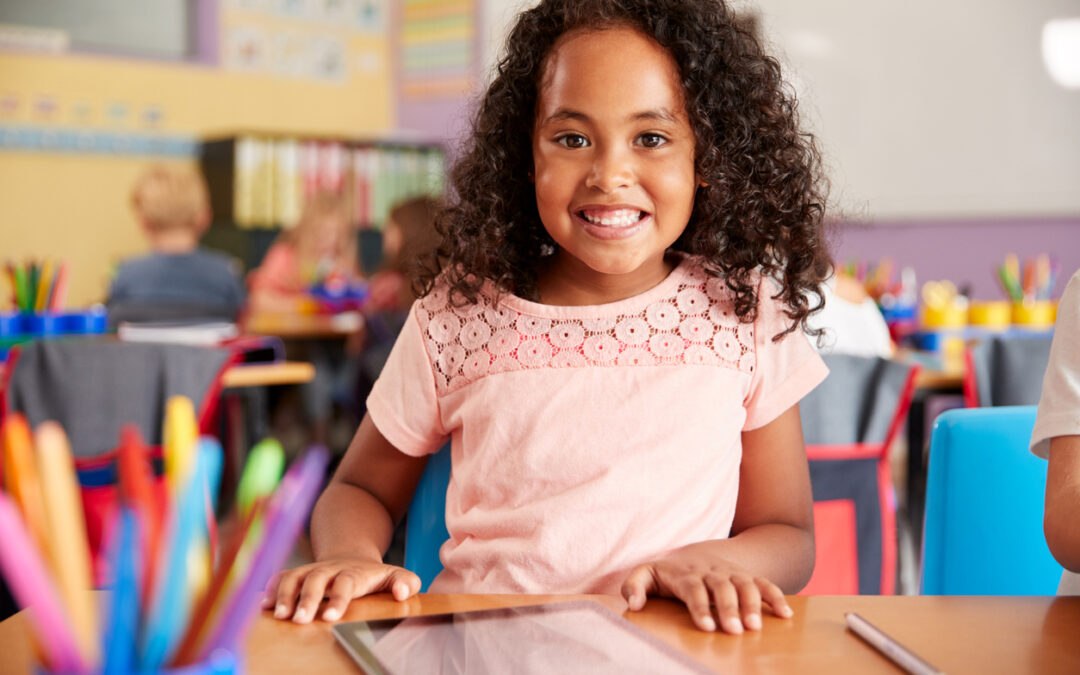Digital literacy encompasses a range of skills that transform the ways in which students learn, collaborate and digest information. These digital skills include things like computer operations, computational thinking and digital citizenship. By teaching these skills, we enable students to understand, use and safely interact with technology, media and digital resources in real-world situations.
Integrating Digital Literacy into Your Existing Curriculum: 4 Strategies
Although the subject of digital literacy is broad, it does not always require an entirely new class or take the place of other programs. Instead, digital literacy fits well into the existing class structure at any school. Here are four ideas for implementing a digital literacy program into your existing curriculum.
Strategy 1: Refocus Lab Time with Digital Literacy
Computer labs are great for hands-on learning and independent practice to help students explore technology and begin addressing vital digital skills. In these labs, students learn from experienced technology teachers who can complement core instruction with technology practice. It is a good option for providing students with access to technology when a 1:1 initiative is not in place.
Refocusing lab time on a more strategic path to teaching digital literacy can be a simple, non-invasive approach to integrating digital literacy into your existing curriculum.
“By refocusing and dedicating lab time to building students’ digital skills, we watched students gain stronger technology capabilities.”
-Tony DeMonte, Instructional Technology Coordinator, Wilmette School District 39
Strategy 2: Model Digital Literacy in the Library
Libraries present a unique opportunity to experience the enmeshment of traditional and digital media, which helps students know how to skillfully navigate a holistic research process. As libraries evolve to include makerspaces, students use technology to be creators and problem-solvers in hands-on and collaborative ways. Like the computer lab, libraries offer the opportunity to learn from experienced technology and media teachers and ensure all students have access to technology.
“When teachers experience how the library media specialists are using a technology curriculum with students in the library, they get more familiar with digital literacy and can better support these skills in the classroom, too.”
– Stormy Cullum, Instructional Technology Coordinator, Liberty Eylau ISD
Strategy 3: Enhance Core Classes with Digital Literacy
Integrating digital literacy into core instruction is an excellent approach for contextualizing technology and ensuring it is foundational to student learning. By including technology in this setting, students encounter diverse learning experiences that help to optimize their learning process.
“Even the simple activity of having students write a poem in class using the computer becomes an opportunity to incorporate digital literacy.”
– Emily Bourgeois, Instructional Technology Specialist, Pasadena Independent School District
Strategy 4: Implement in Multiple Settings
While all the previous approaches serve a digital literacy program, there are cons to solely implementing within only one setting. For example, computer and library media classes are usually intermittent, and computer science classes may be an elective. And in core classes, digital literacy can be overshadowed by other content areas that teachers are prioritizing.
The most effective implementation model is one that makes digital literacy accessible to all students and allows for consistent and purposeful practice. By integrating digital literacy throughout student learning, it spans the whole of the student experience:
- Deepen the complexity of skills in computer labs.
- Reimagine how technology supports learning in the library.
- Develop digital skills alongside core content knowledge in classrooms.
Digital skills are also easily developed in STEM and STEAM programs. Some teachers are even finding opportunities to bring technology to physical education, counseling programs and art classes.
Final Thoughts
Implementing a digital literacy program should be an opportunity to reflect on the diverse ways students can develop critical digital skills through engaging, hands-on constructive instructional methods.
With a holistic implementation model, opportunities abound to equip students with digital literacy needed in this technological world.

Learning.com Team
Staff Writers
Founded in 1999, Learning.com provides educators with solutions to prepare their students with critical digital skills. Our web-based curriculum for grades K-12 engages students as they learn keyboarding, online safety, applied productivity tools, computational thinking, coding and more.
Further Reading
Examples of Technology Literacy: Empowering Students in the Digital Age
Technology has become part of almost every aspect of our lives, shaping how we communicate, learn, work, and solve problems. For today’s students,...
Netiquette as a Tool for Promoting a Positive Classroom Culture
Technology has become an essential part of modern classrooms – beyond being part of “future readiness,” it’s a necessary everyday skill for K-12...
How Keyboarding Skills Enhance Digital Literacy Across Subjects for K-12 Students
In today's rapidly evolving digital landscape, digital literacy is essential for students to thrive in both their academic and future professional...




